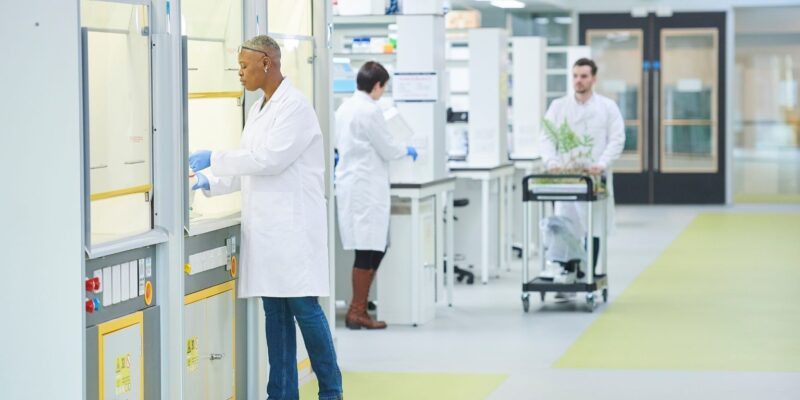Lab Design Starts Here: 770-932-1118
5 Best Practices for Laboratory Relocation Planning and New Lab Setup

Laboratory relocation is one of the more stressful and difficult undertakings you and your staff will have to undergo when a facility upgrade is needed. However, by taking extra care with your laboratory relocation planning, you can mitigate the costly, stressful, and time-consuming nature of a large-scale move. If you keep this new laboratory setup advice in mind, you’ll save yourself from a number of undesirable incidents commonly associated with lab renovation and relocation.
1 Know Your New Location Beforehand
The main theme of proper laboratory relocation is planning ahead, and this should begin months before the big day. Scout out your new location and identify any potential issues beforehand. Measure out hallways, elevators, and doorways in advance to find the best ways of getting your important equipment inside — something you definitely don’t want to figure out on moving day! Take note of the plumbing, mechanical, and electrical infrastructure of your new space so you can build your new floor plan accordingly.
2 Build a Realistic Schedule
In order to reduce the stress on your team and have the lowest impact on your lab’s ongoing research, you should prepare a realistic and organized schedule. Time yourselves performing fundamental lab relocation tasks in order to extrapolate a timeline for the move. Additionally, establish accountability and consistency by assigning each task to a specific person. This makes it easier to identify and correct any issues.
3 Take Stock of Supplies and Equipment
It’s no secret that lab equipment — especially expensive and important equipment — can be very specific concerning methods of handling and the environments they’re in. It’s a good idea to take a full, categorized inventory of everything in your lab and think about the optimal way of transporting everything from equipment to samples. If you have live samples, proper refrigerated transportation needs to be arranged to ensure your team doesn’t lose weeks or even months of prior work.
4 Be Aware of Laws and Regulations
Depending on the type of work your lab conducts, you may hire lab relocation services to transport materials that could be considered dangerous. If so, do your research well in advance to secure the proper permits in the interest of public safety. At your new facility, familiarize yourselves with the new safety requirements, certifications, and third party vendors required to get it up and running, making sure that your ongoing research is interrupted as little as possible.
5 Review Current Practices
A move is a great time to look over your current practices and identify areas for possible optimization. You don’t want to carry over wasteful or unnecessary practices into your new facility, so take time for some tactical introspection. You might be able to identify areas of
unnecessary expense that could be cut or processes that could be optimized through solutions like automation or lean design.
Whether you are downsizing, consolidating or expanding your laboratory facilities, Labds has extensive experience. LabDS specializes in laboratory relocation planning and renovation and can take care of every step in the process to ensure a seamless transition for you and your team.

